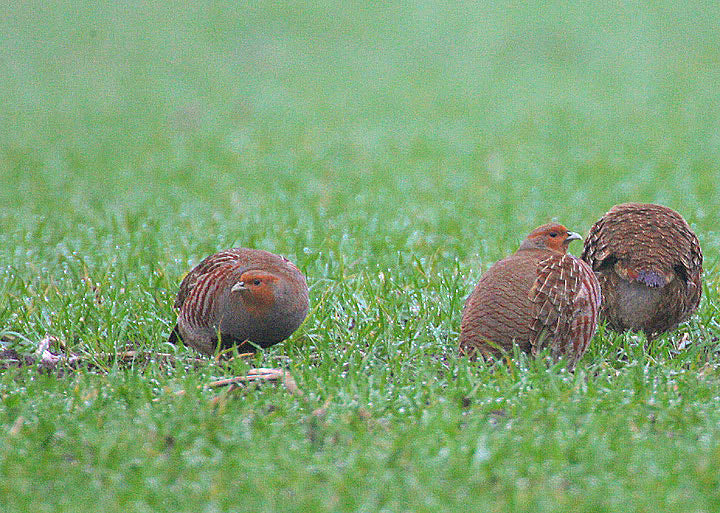Offer
Provide additional details about the offer you're running.
Provide additional details about the offer you're running.
Provide additional details about the offer you're running.

Feature Image By Steve Garvie from Dunfermline, Fife, Scotland (Grey Partridge (Perdix perdix) on a grey day) [CC BY-SA 2.0 (http://creativecommons.org/licenses/by-sa/2.0)], via Wikimedia Commons
Things only got worse from then on out. Land began to be acquired by larger and industrial interests and the farming practices of farmers changed dramatically. What were once fields full of small grains, a perfect feed for game birds, were being replaced with crops like Alfalfa.
As smaller farms began to sell off or cease operations, the population of predators like coyotes started to flourish, diminishing any gains in population growth for the Hungarian partridge. The haying season too affected these birds in a big way. What was once a season that began in late May or early June, weather dependent now was pushed off until mid-June to July, the main nesting period for these game birds. Sadly, many of these birds were caught off guard during the first hay cut and often lost their nests in the process.
Today the Ministry of Natural Resources (MNR) is becoming optimistic about the return to glory of the gray partridge. Today, what’s left of these game birds reside mainly outside of the Brantford area with another strong population pocket in the Dunneville-Halimand area. Researchers believe this is due to the changing farming practices of the areas. Local farmers are moving away from tobacco plants and are now growing shell corn and soybeans and these crops seem to be attracting more birds to the area.
The third largest population of the gray partridge resides right here in the Ottawa Valley. It is believed that similar farming practices and better habitat along the Ottawa River Valley are attracting these birds to our area.
The MNR does not keep accurate population estimates for any small game or game birds, other than wild turkeys. Many researchers believe that the approach that was taken to increase the numbers of wild turkeys in the province should be undertaken to ensure the continued population growth of the gray partridge. Officials believe these species should be managed with a very long-term vision to allow them to truly flourish and become a natural part of our landscape once again.
High Quality Blend